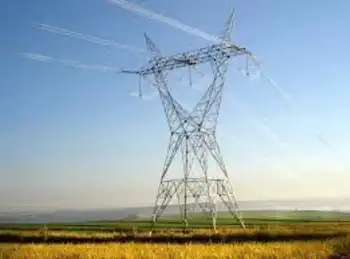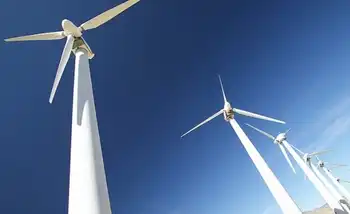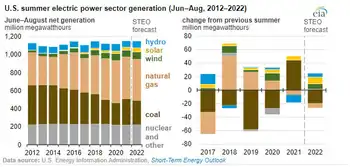High Voltage Solar Power Controversy
SOUTHERN CALIFORNIA - A solar power plant that would supply green energy to hundreds of thousands of Southern Californian homes has come under attack - from environmentalists. Stirling Energy Systems has a contract to provide up to 900 megawatts of renewable energy to San Diego Gas & Electric from a 36,000 solar dish array to be built in the Imperial Valley desert.
The first phase, a 300-megawatt, 12,000-dish array is to be completed by 2010. The rub: SDG&E needs to build a $1.3 billion, 150-mile transmission line through a state park and other environmentally sensitive lands to get the renewable energy to its customers. Green groups are fighting the proposed Sunrise Powerlink, and in public hearings under way in San Diego they have cast the Stirling project as a technological Trojan horse being used by the utility to justify an environmentally damaging big power grab that could ultimately be used to deliver fossil-fueled electricity.
In testimony on behalf of the Center for Biological Diversity, a former executive with one-time Stirling Energy rival SAIC portrayed the Phoenix company's Stirling dish as a costly and unreliable technology that would be hard-pressed to deliver on the SDG&E contract. A Stirling dish concentrates the sun's rays on a heat engine. As hydrogen inside the engine expands it drives pistons that generate electricity. Stirling Energy currently operates a six-dish prototype power station at Sandia National Laboratories outside Albuquerque.
"The commercial viability of the Stirling system is unproven at this time," testified Barry Butler, veteran solar power scientist, in an affidavit. "My opinion is that dish/Stirling technology holds much promise. By 2020, the technology could be a significant player on a commercial scale in the concentrated solar power category. However, there is no possible way that dish/Stirling solar can move from high cost prototype models with substantive reliability concerns to large-scale production of high reliability low-cost commercial models by 2008 and full operation of a 12,000 dish, 300 MW array by the end of 2010."
Butler based his testimony on SAIC's experience with Stirling dish technology in 2002 when SAIC and Stirling Energy operated test dishes in Nevada. "Both SAIC and SES conducted maintenance on a nearly continuous basis to keep the units available for electricity production," Butler wrote in his affidavit.
Stirling Energy CEO Bruce Osborn, however, dismissed SAIC's history with its Stirling dish technology, which it eventually abandoned, as irrelevant to his company. "It doesn't seem realistic, or even reasonable, to compare SAIC's problems and experiences to SES' measured superior performance over extended periods," Osborn wrote in an email to Green Wombat. "Although the two systems are both called "Dish-Stirling Systems," they are in fact quite different in terms of the fundamental design approaches."
Rebutting Butler's testimony, energy consultant Lon House noted that SAIC's Nevada solar dish was available for electricity production less than 35 percent of the time versus more than 95 percent for Stirling Energy's technology. He also testified that he contacted the companies manufacturing Stirling Energy's solar dish and that they confirmed they could meet cost targets that would allow Stirling to produce electricity at competitive prices.
However the transmission line fight ends, it shouldn't hinder the first 300-megawatt phase of Stirling Energy's project as existing transmission lines can handle that load, Osborn told Green Wombat in a previous interview.
But the controversy is a sign that even green energy power plants can face the same sort of opposition as any large-scale project. Inevitably, there will be trade-offs as U.S. utilities move toward renewable energy and locate solar power plants where the sun shines the most - in the deserts of the southwest. Stirling Energy is also under contract to supply up to 850 megawatts of solar energy to Southern California Edison. Northern California's PG&E (PCG), meanwhile, is negotiating with BrightSource Energy for 500 megawatts of solar power.
Related News

Toronto Cleans Up After Severe Flooding
TORONTO - Toronto is grappling with significant cleanup efforts following severe storms that unleashed heavy rains and caused widespread flooding across the city. The storms, which hit the area over the past week, have left a trail of damage and disruption, prompting both immediate response measures and longer-term recovery plans.
The intense rainfall began with a powerful storm system that moved through southern Ontario, delivering an unprecedented volume of water in a short period. The resulting downpours overwhelmed the city's drainage systems, leading to severe flooding in multiple neighborhoods. Streets, basements, and parks were inundated, with many areas experiencing water…




